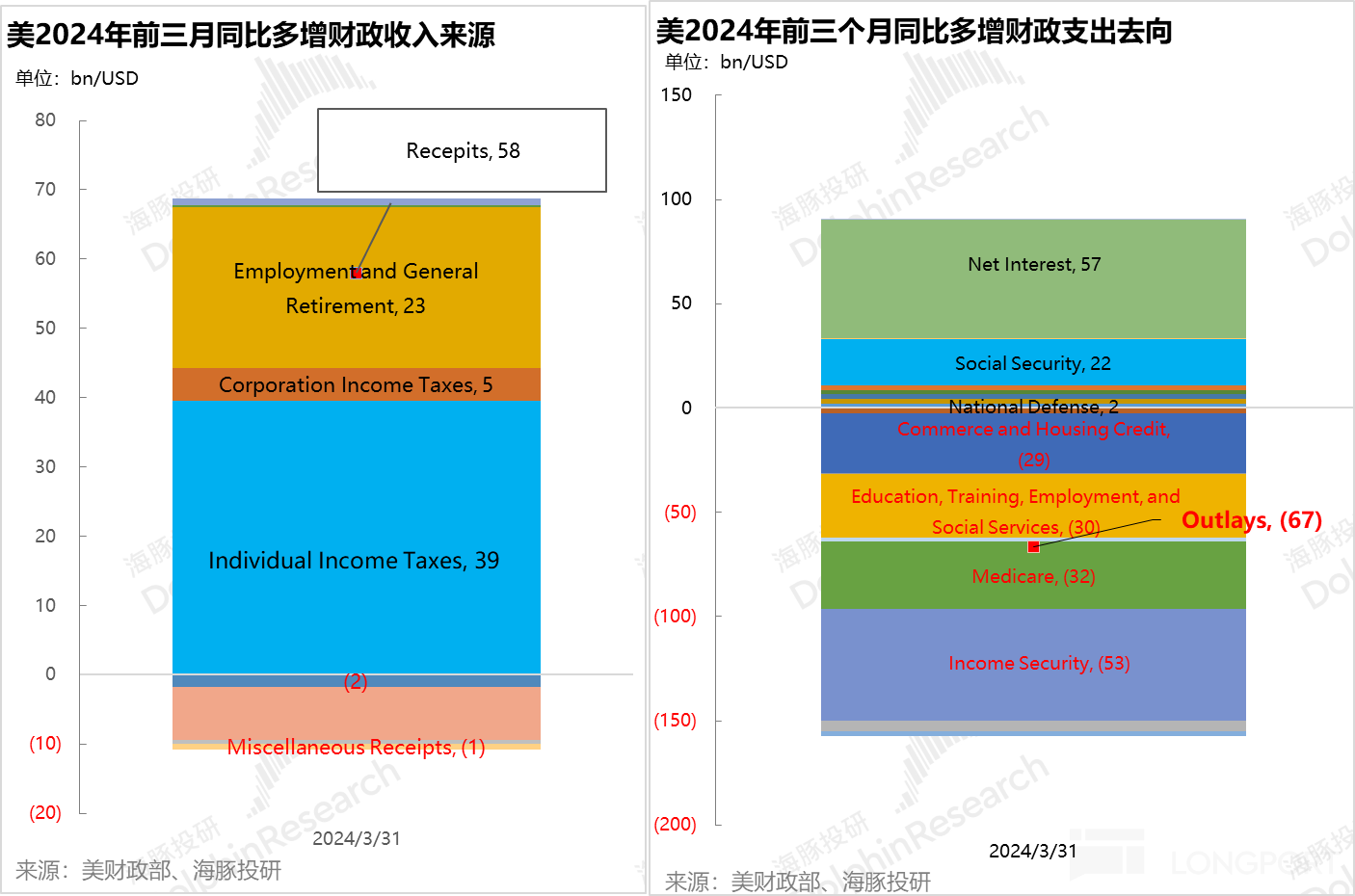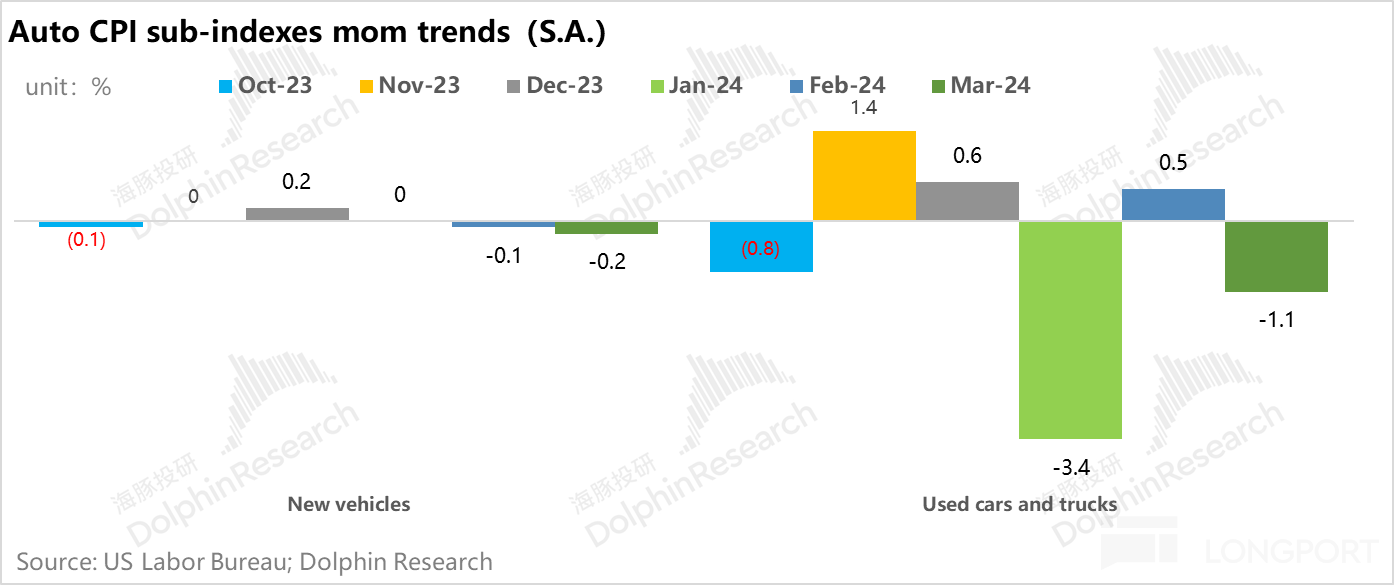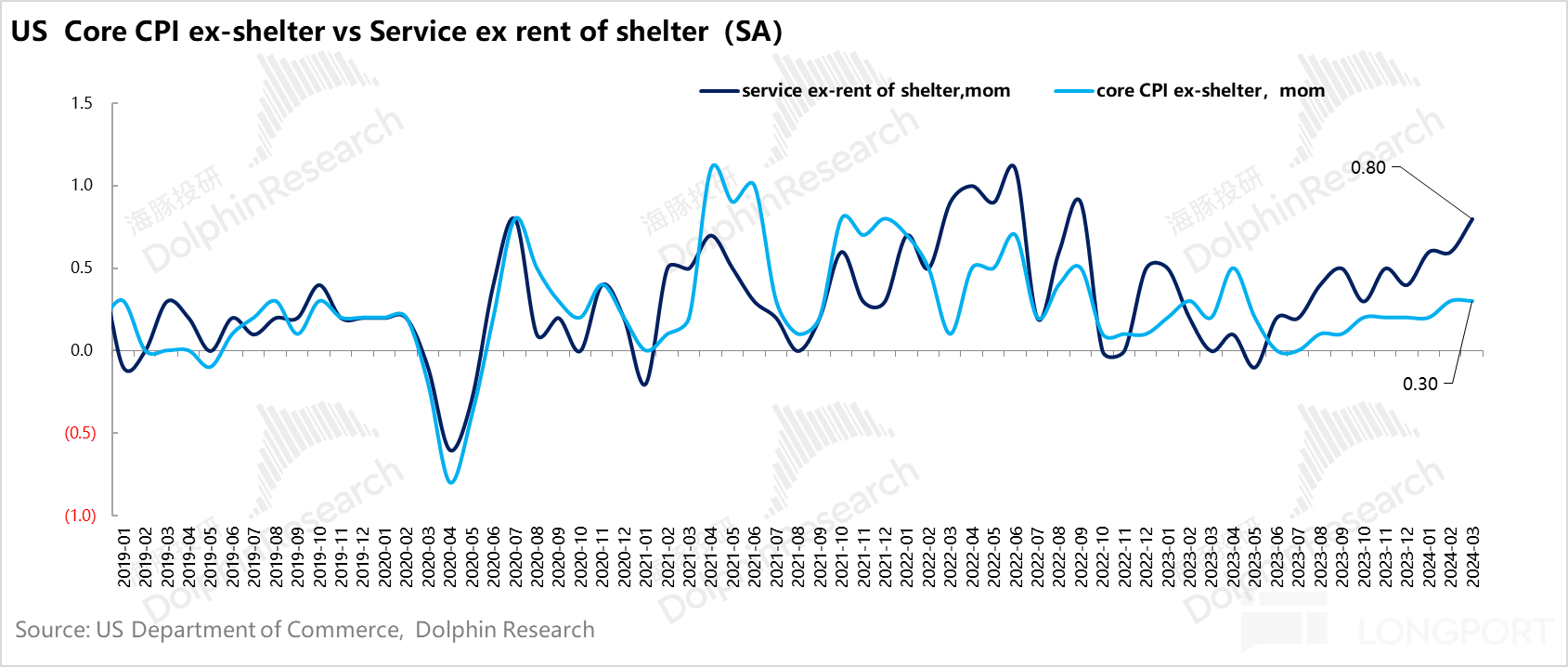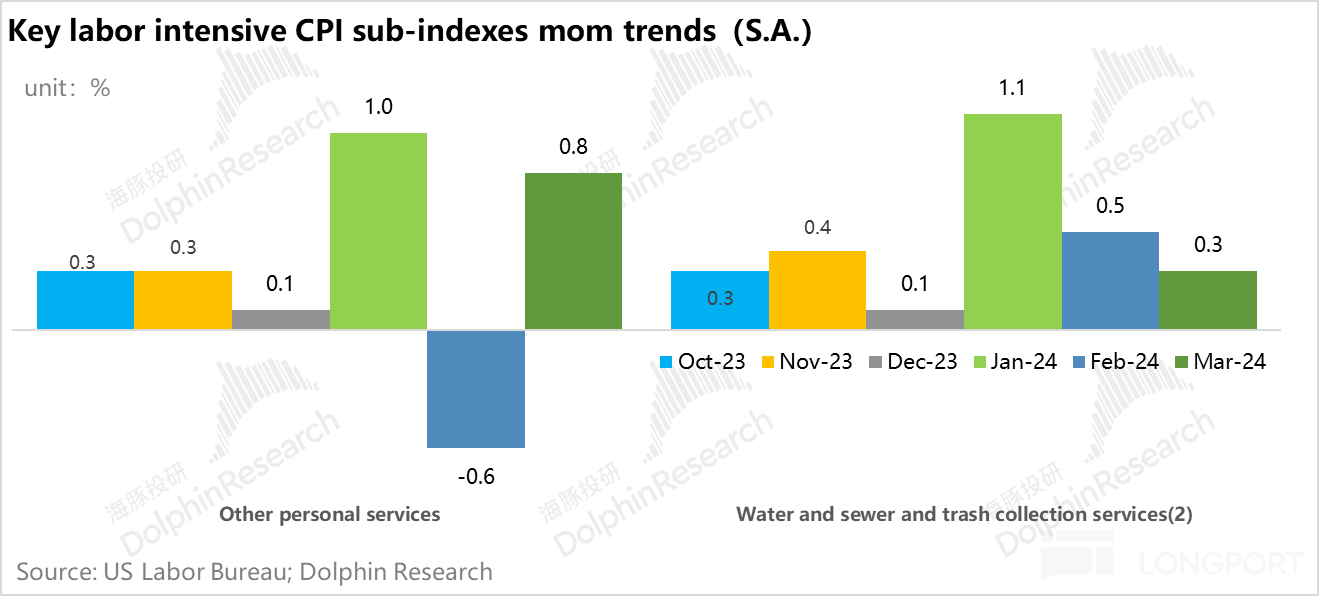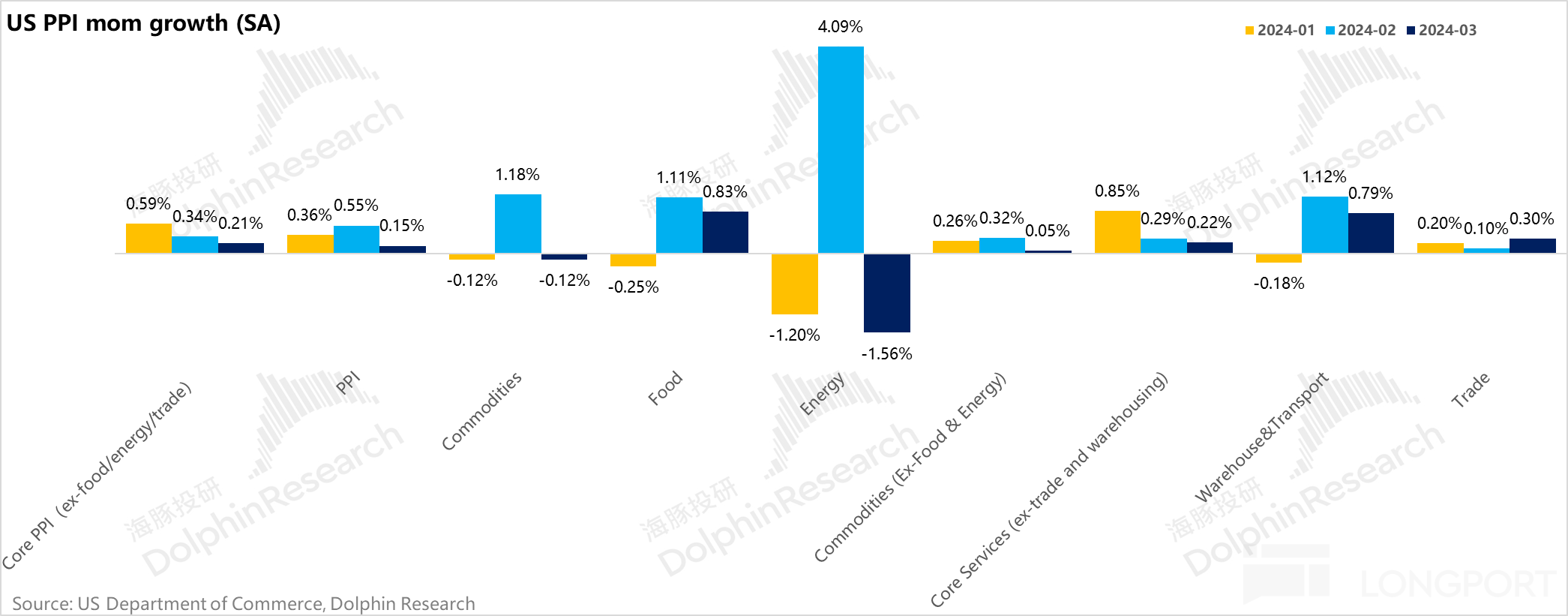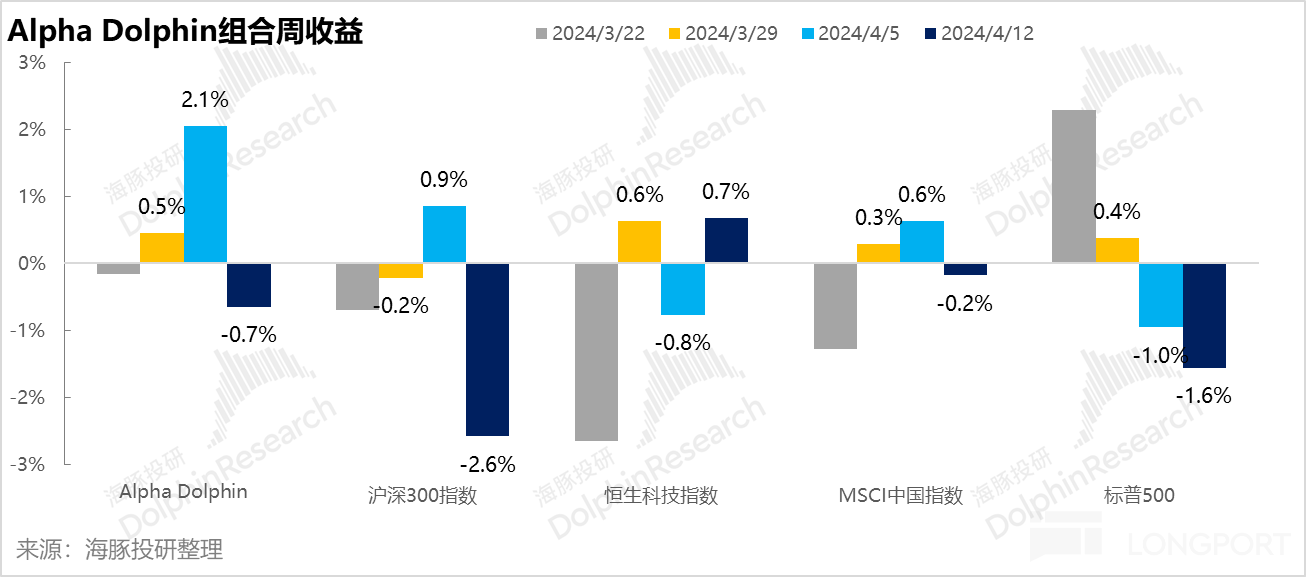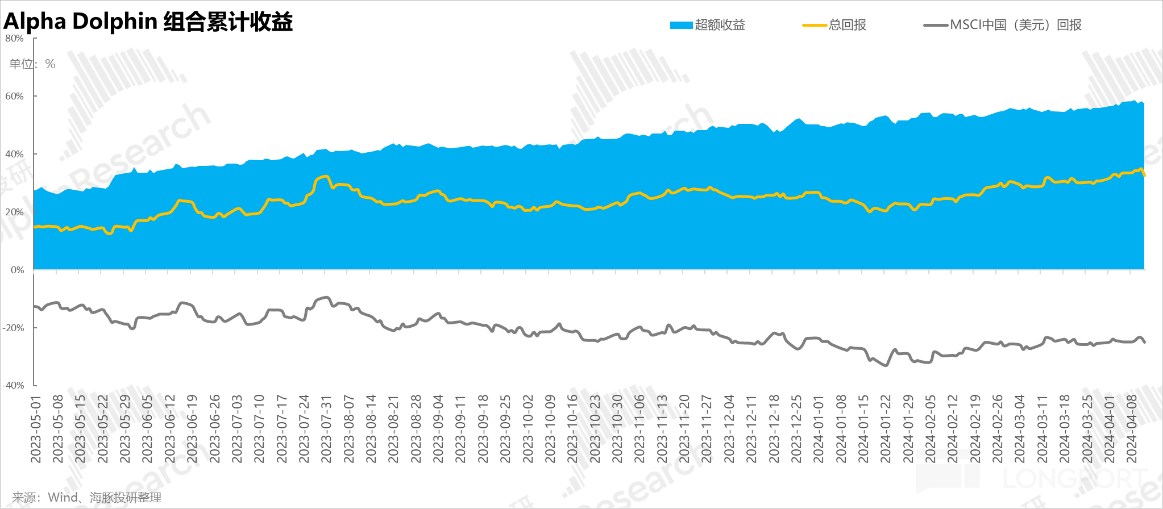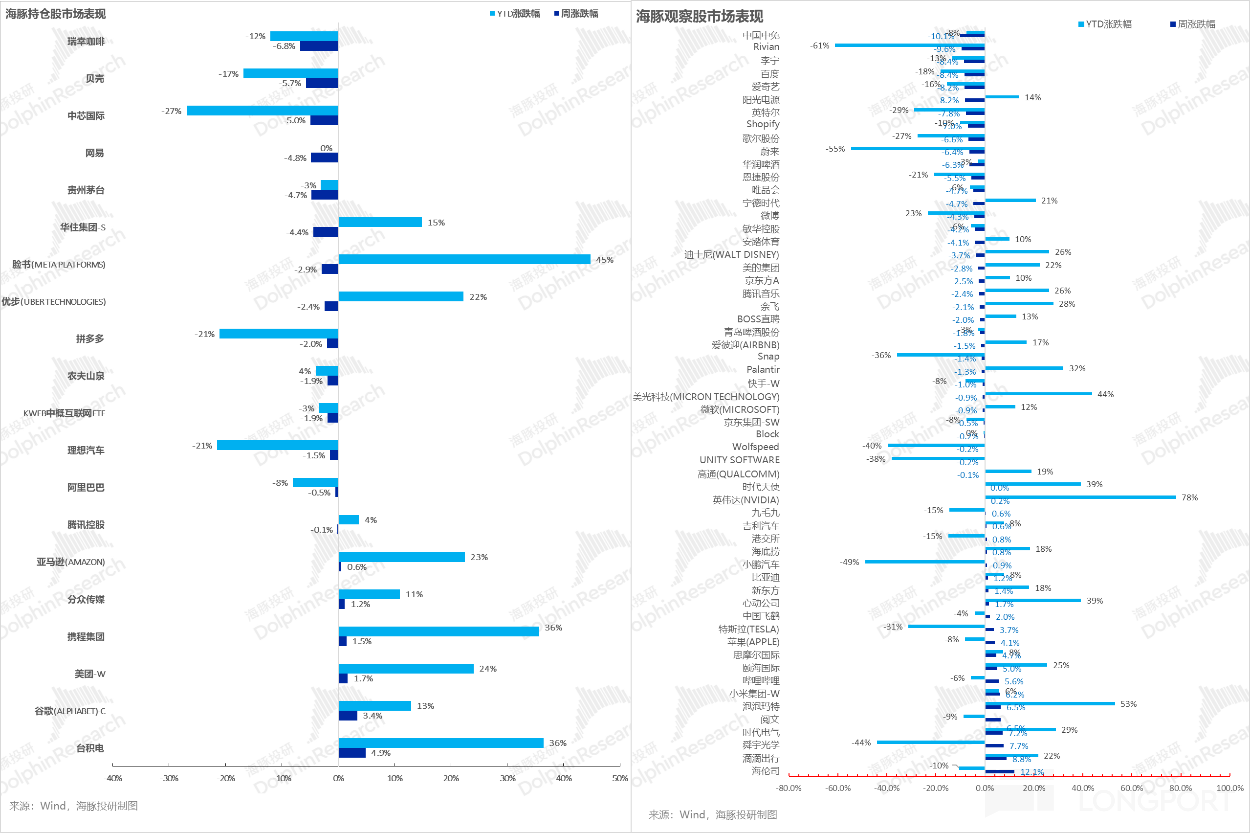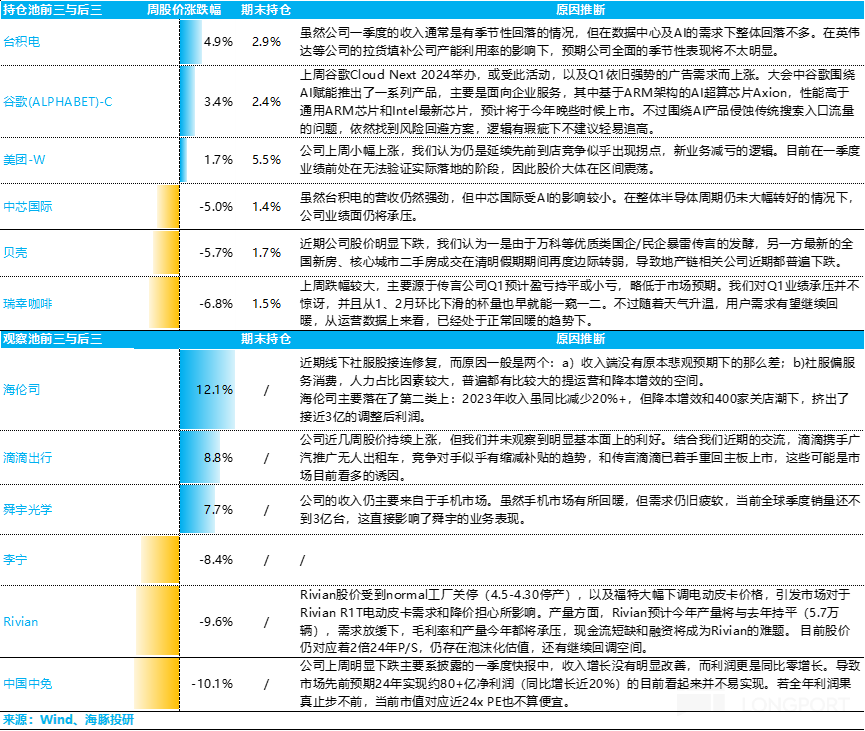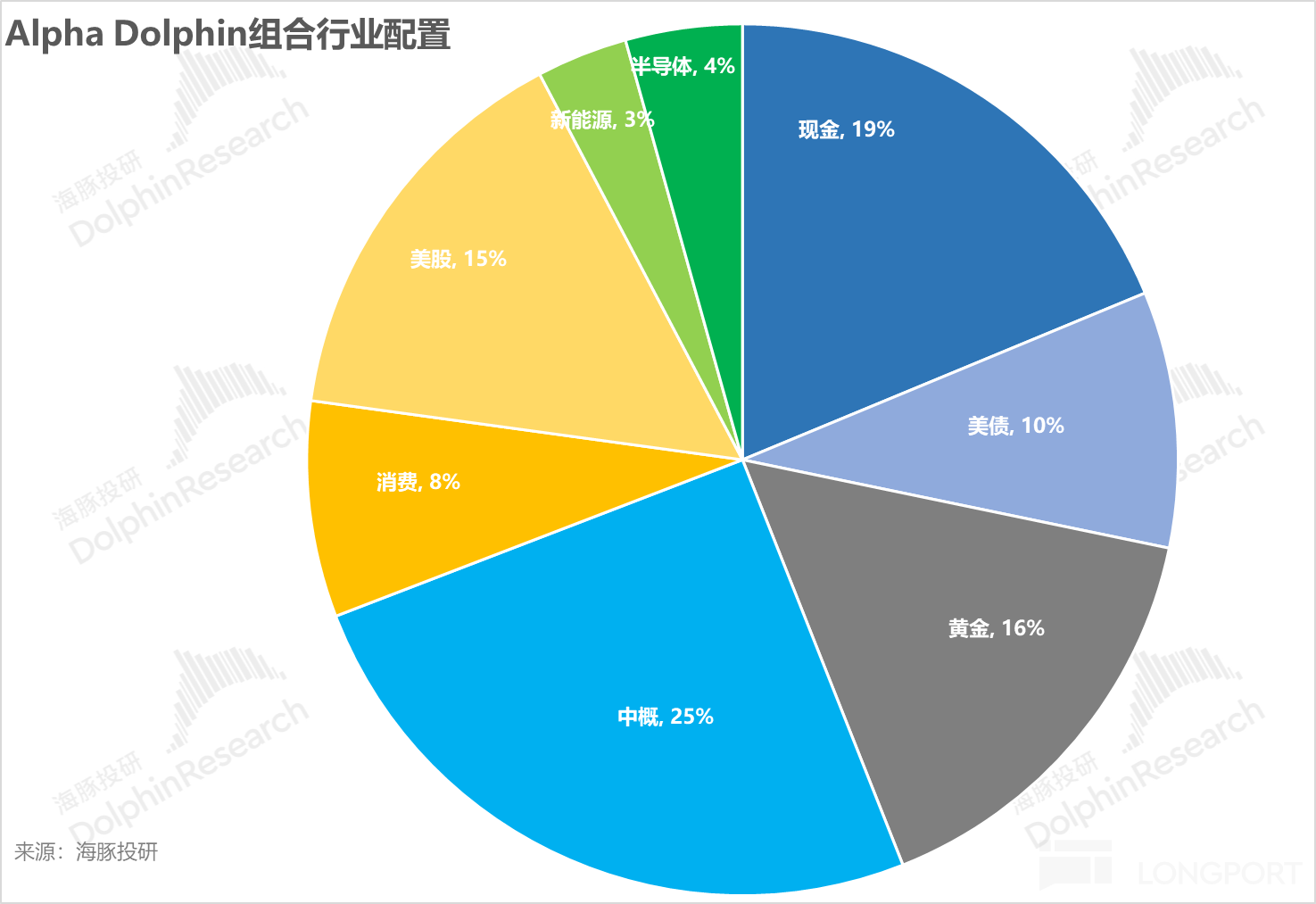
 Likes Received
Likes Received Posts
PostsAs U.S. stocks and Chinese concept stocks both experience a pullback, who presents an opportunity?

Hello everyone, the following is the core content of the weekly strategy report summarized by Dolphin:
1) March Deficit: In March 2023, the soaring fiscal deficit finally saw an increase in income driven by asset appreciation. The total deficit for the first three months of 2024 is $555 billion, with a narrow deficit of $340 billion. The fiscal deficit in the United States has overall narrowed compared to the same period last year.
However, this convergence is not without stimulus. In the first quarter of 2024, the narrow deficit rate is about 5.3%, compared to the pre-pandemic deficit rate of not exceeding 3.5% and the recognized caution level of 3%, indicating a clear loose fiscal policy.
2) March Inflation: While consumer price inflation in the United States in March remains a pressure, there is not much pressure from Producer Price Index (PPI) inflation and wage growth towards Consumer Price Index (CPI) inflation.
Therefore, although the market is concerned about inflation pressure in the United States in 2024, with market having fully priced in the rate cuts (the 10-year Treasury yield hovering around 4.5%, the 2-year yield at 4.9%), Dolphin emphasizes the need to consider increasing the allocation of Treasury bonds at this price level without overly emphasizing the true pressure of secondary inflation.
3) U.S. Stocks: The representative indicator of market liquidity - bank reserve balances, increased last week despite the release of balances from the Treasury General Account (TGA), indicating a more relaxed marginal liquidity. With the U.S. economy still strong fundamentally and liquidity marginally loose, last week's adjustment was mainly due to geopolitical tensions between Iran and Israel.
Considering current media reports, the Iranian attack seems more like a warning attack to prepare the other party, and the probability of a large-scale Israeli retaliation is not high. In this situation, Dolphin still tends to believe that if this geopolitical conflict can create a dip in U.S. stocks, it is necessary to focus on the opportunities brought about by the adjustment.
4) Chinese Concept Stocks: Since the beginning of spring, the rise of Chinese concept stocks is not only due to the loose liquidity in the U.S. stock market, but also due to the better post-holiday consumption data in China and the economic improvement expectations brought by the rebound in CPI and PMI. However, the latest March CPI data has turned downwards, and credit data shows that residents are still deleveraging, and real estate sales remain weak.
Dolphin believes that under the narrative logic of unique consumption driving economic recovery, it is necessary to focus on whether this week's March social zero data can lead to an independent market trend in the weak credit and CPI data, while Chinese concept stocks need to pay attention to the risk of a pullback in the short term.
Here are the detailed contents:
Two data points in the U.S. last week are worth focusing on - one is the federal fiscal revenue in March, and the other is the price data in March. The economic trends indicated by these two data points still look good.
I. U.S. Fiscal Situation: Deficit is finally narrowing, but still relatively loose
It is now well known that the economic growth in 2023 was achieved through a pro-cyclical expansion of federal finances with less revenue and more expenditure. Revenue decreased due to lower individual taxes, especially a decline in capital gains income; while expenditure increased significantly due to inflation adjustments in social security, Biden's three major spending bills, defense spending, and interest paymentsMoving into 2024, the US deficit expansion has finally begun to narrow - in March, the US fiscal deficit was less than 240 billion, with the narrow deficit affected by interest payments being less than 160 billion.
In March, the federal fiscal revenue in the US is reflected as:
a. More than 40% of fiscal revenue comes from individual income tax (approximately 40% is withheld by employers, and 60% is from individuals' self-declared interest, dividends, and capital gains taxes), which has finally started to grow in 2024.
Due to the sustained good employment in this economic cycle, the part withheld by employers should trend similarly to payroll taxes, so the high volatility in individual taxes is mainly related to the self-declared portion by individuals. Since the fourth quarter of last year, the increase in realization of basic stocks, bonds, and commodities has boosted fiscal revenue from individual taxes;
b. Social security taxes, accounting for over 30%, have steadily increased year-on-year; corporate income tax, accounting for over 20%, has slightly increased. Although the three major sources of revenue resonate, the real marginal improvement should come from the increase in self-declared taxes in individual taxes (reflected in the reduction of federal tax refunds), which has increased the fiscal revenue of the US federal government.
The reduction in March fiscal expenditure mainly reflects:
a. The sectors of the Biden economic stimulus policy - commercial and housing credit industries, as well as education/training/employment/social services, have weakened to some extent in terms of fiscal stimulus.
b. Other miscellaneous items such as elderly healthcare, retirement veteran benefits, defense spending, etc., have also decreased, but there is a difference in payment timing between last year and the same period this year. Excluding this factor, the actual expenditure would be 500 billion higher than reported in March.
As a result, the year-on-year decrease in the deficit is not 143 billion, but 69 billion. By the end of the first three months of 2024, the overall deficit is 555 billion US dollars, with a narrow deficit of 340 billion US dollars. Compared to the same period last year, the US fiscal deficit is overall in a converging state.
However, it is important to note that while the deficit has narrowed year-on-year in the first quarter, the absolute value is still very large, corresponding to a narrow deficit rate of approximately 5.3% in the first quarter of 2024. This deficit rate is still significantly loose compared to the pre-pandemic deficit rate of not exceeding 3.5%, and the recognized cautionary level of 3%.
Second, March: Difficult to leak inflation, should we really worry about secondary inflation?
The biggest issue with the March CPI is that the market initially thought it had overcome the seasonal effects of January and February, leaking inflation at the right time, but the March data did not turn out as expectedMarch core CPI still has a month-on-month growth of 0.36%, and the year-on-year growth of core CPI in the first three months of 2024 has reached 4.5%. If the remaining 9 months continue on this trend, it is feared that interest rates may not be lowered this year, but there may be a possibility of an increase.
So, the key here is to try to understand the structural trends from the changes in the core CPI in March, distinguishing between structural trends and short-term ones. From the structural breakdown:
a. Core goods: Driven by the decline in prices of new cars and used cars, the core goods contracted by 0.2% month-on-month, with the largest weighted category in consumer goods consumption—cars, leading to a continued deflationary trend in core goods.
b. Core services: The inflation in March is mainly due to core services, with the main increase coming from excluding housing core services. Looking closer, it includes hospital-related services in medical services, as well as motor vehicle insurance and maintenance in transportation services.
The medical sector has been experiencing high inflation due to persistent labor shortages. The real issue in March lies in transportation, especially motor vehicle insurance. However, looking ahead, it seems that this sector may not easily transmit to the overall service sector.
In terms of labor-intensive core services that Dolphin Jun pays attention to, there is no clear secondary inflation trend observed. Considering the high employment of over 300,000 in March, mainly through supply-side improvements (increased participation rate), and with hourly wages increasing by 0.35%, it still seems relatively manageable. Service inflation does not appear to be a secondary inflation brought about solely by labor inflation.
In addition, in terms of commodity inflation, the PPI in March is also a reassuring signal: excluding food and energy, the bulk commodity PPI, as raw materials for commodity production, has a weak increase; at the same time, the core services PPI excluding trade and warehousing also shows a narrowing increase. If this trend continues, it means there will be no further PPI inflation, and there will be no pressure for subsequent PPI inflation to transmit to CPIOverall, Dolphin believes that although there is still pressure on consumer price inflation in the United States in March, there is not much pressure from PPI prices and wage growth in terms of PPI inflation or labor inflation transferring to CPI. Therefore, while the market is concerned about inflation pressure in the United States in 2024, there is no need to overly emphasize the true pressure of secondary inflation given that the market has already fully retraced the rate cut (the ten-year Treasury bond has been hovering around 4.5%, the two-year bond at 4.9%).
III. Further Liquidity Easing
Although the market experienced a significant pullback last week due to CPI data not falling as expected and Iran's attack on Iraq, liquidity in the U.S. stock market actually became more loose on a weekly basis.
The main source of this loosening was that the Federal Reserve did not sell Treasury bonds on the asset side last week, with a slight contraction mainly due to a decrease in BTFP balance, making the overall asset side contraction almost negligible.
The significant loosening mainly came from the liability side: the excess fiscal revenue collected by the U.S. government in 2024 has not yet been spent from the TGA account, and was immediately invested. The TGA account has been shrinking for three consecutive weeks, resulting in a slight increase in bank reserve balances without consuming reverse repos, making market liquidity marginally looser.
Combining the above points (I-III), it can be seen that with the strong fundamentals of the U.S. economy and marginally loose liquidity, last week's adjustment was mainly due to geopolitical conflicts between Iran and Israel.
Based on current media reports, this Iranian attack seems more like a warning attack to prepare the other party, and the probability of a large-scale retaliation by Israel is not high. In this situation, Dolphin still tends to believe that if this geopolitical conflict can create a dip in the U.S. stock market, it is necessary to pay attention to the opportunities brought about by the adjustment.
IV. Portfolio Rebalancing and Returns
On April 12th, the Alpha Dolphin virtual portfolio did not rebalance. By the end of the week, the portfolio's return fell by 0.65%, weaker than Hang Seng Tech (+0.7%) and MSCI China (-0.2%), but stronger than the S&P 500 (-1.6%) and CSI 300 (-2.6%).
Since the start of the portfolio testing until the end of last week, the absolute return of the portfolio was 32.5%, with an excess return compared to MSCI China of 57%. From the perspective of net asset value, Dolphin's initial virtual assets of $100 million have now risen to $134 millionV. Individual Stock Profit and Loss Contribution
Last week, the US stock indexes showed significant differentiation. In the case of high CPI data, indexes sensitive to interest rates such as the Russell 2000 experienced a significant decline, while tech stocks in the US, considered relatively safe in the absence of an Iranian attack, performed well. Similarly, Chinese concept stocks, being assets with high sensitivity to interest rates and weak risk resistance, also experienced a significant pullback last week, with KWEB as a reference.
Another area to pay attention to is that the recent rise in Chinese concept stocks, in addition to the loose liquidity in the US stock market, is also due to expectations of improvement in China's economic fundamentals. These expectations include strong consumer performance since the Spring Festival, as well as the rise in CPI and PMI.
However, the March CPI data has turned downwards, and credit data shows that residents are still deleveraging. It is important to see if the March social retail data this week can maintain an independent trend in the face of weak credit and CPI data. In the short term, Chinese concept stocks need to pay attention to the risk of a pullback.
VI. Portfolio Asset Allocation
The Alpha Dolphin virtual portfolio holds a total of 20 individual stocks and equity ETFs, with 6 core holdings and the rest being underweighted equity assets, along with gold, US bonds, and US dollar cash.
As of the end of last week, the asset allocation and equity asset weightings of Alpha Dolphin are as follows:
Risk Disclosure and Statement of this Article: Dolphin Research Disclaimer and General Disclosure
For recent articles from the Dolphin Research portfolio weekly report, please refer to:《The United States in 2024, not a soft landing or a crash landing》
《Earn more and spend more, why do American residents consume so fiercely》
《Counting on a major correction in U.S. stocks? Not very hopeful》
《Low inflation in the United States is not receding, can Chinese concept stocks still rise?》
《Dare not chase after the seven tech sisters? Chinese concept stocks unexpectedly benefited》《Enterprise Relay Residents Support the Economy, the United States Will Not Cut Interest Rates Quickly》
《Giants Stagnate, Chinese Concepts Rise, Is it a Last Gasp or a Style Switch?》
《2024, Will the U.S. Economy Avoid Landing?》
《Another Critical Moment! Will Powell Bail Out Yellen, the Prodigal Daughter?》
《Seeing Mud and Sand Together Again, How Much Faith Can Withstand the Test?》
《Unstoppable Deficits, Holding Up the Dignity of U.S. Stocks》
《2024 United States: Good Economy, Quick Interest Rate Cuts? Too Beautiful, Will Suffer Losses》《2023 US Suicide Rebirth》
《Fed Makes a Sharp Turn, Can Powell Resist Yellen?》
《Year-end US Stocks: Small Rise is Comforting, Big Rise is Harmful》
《Consumer Cooling Off, Is the US Fed Really Just a "Hard-mouthed" Fed Away from Rate Cuts?》
《US Stocks Overdrawn Again, Finally the Opportunity for Chinese Concepts》
《US Stock "Sun Never Sets" Faith is Back, Is it Reliable this Time?》《High Interest Fails to Extinguish Consumption, Is the United States Really Strong or Just Hype?》
《Second Half of Tightening by the Federal Reserve, Neither Stocks nor Bonds Can Escape!》
《This is the Most Down-to-Earth, Dolphin Investment Portfolio Sets Sail》
The copyright of this article belongs to the original author/organization.
The views expressed herein are solely those of the author and do not reflect the stance of the platform. The content is intended for investment reference purposes only and shall not be considered as investment advice. Please contact us if you have any questions or suggestions regarding the content services provided by the platform.

